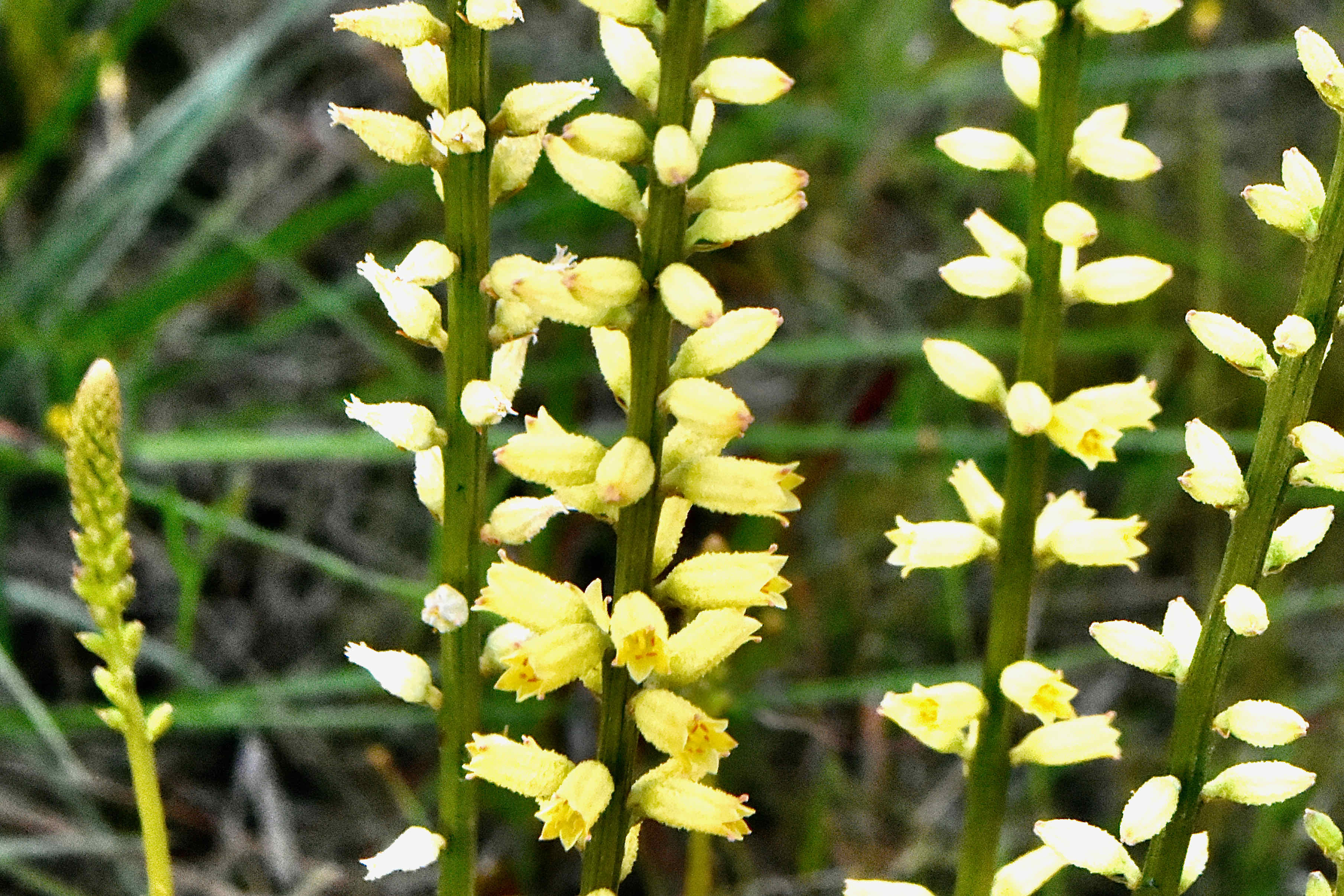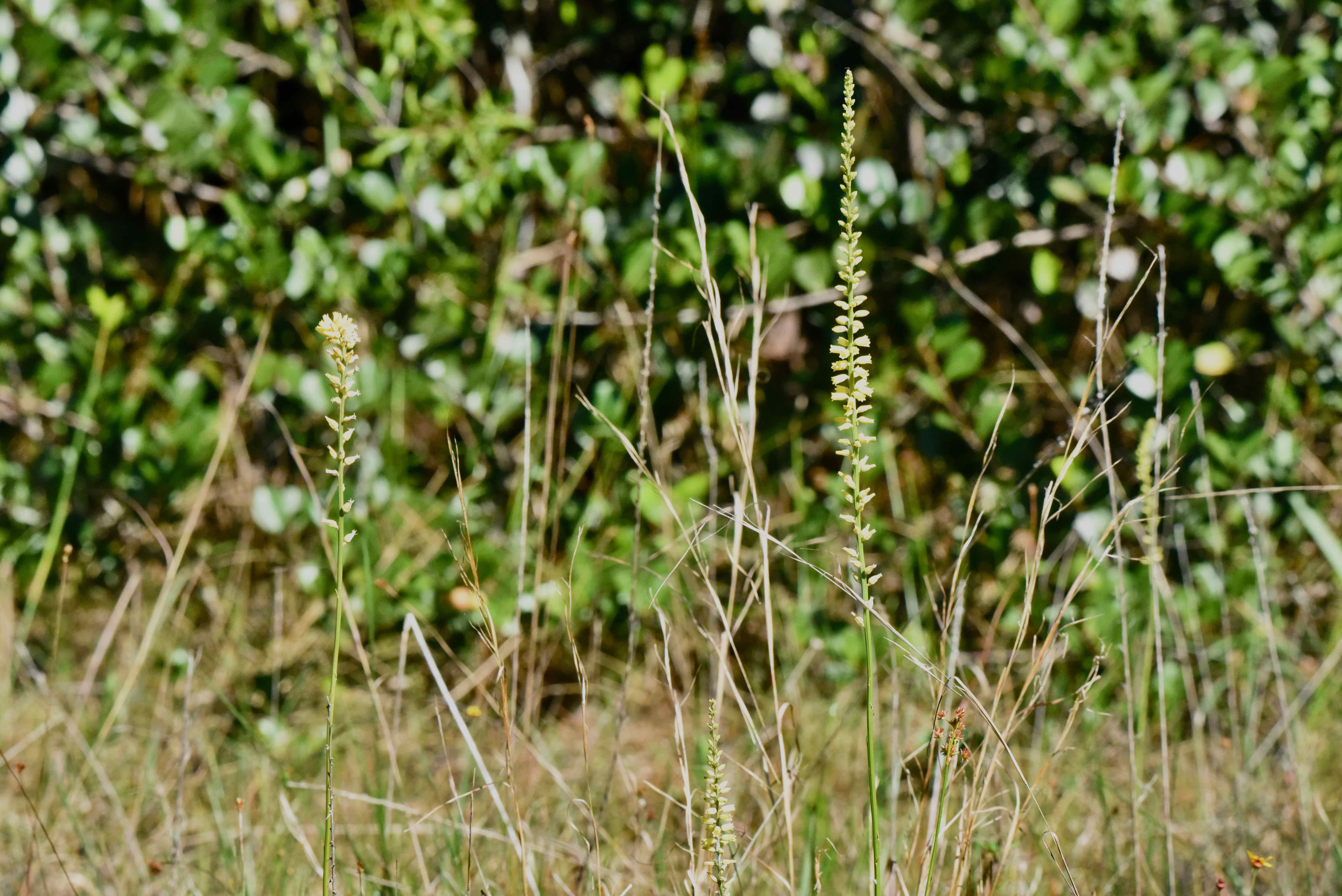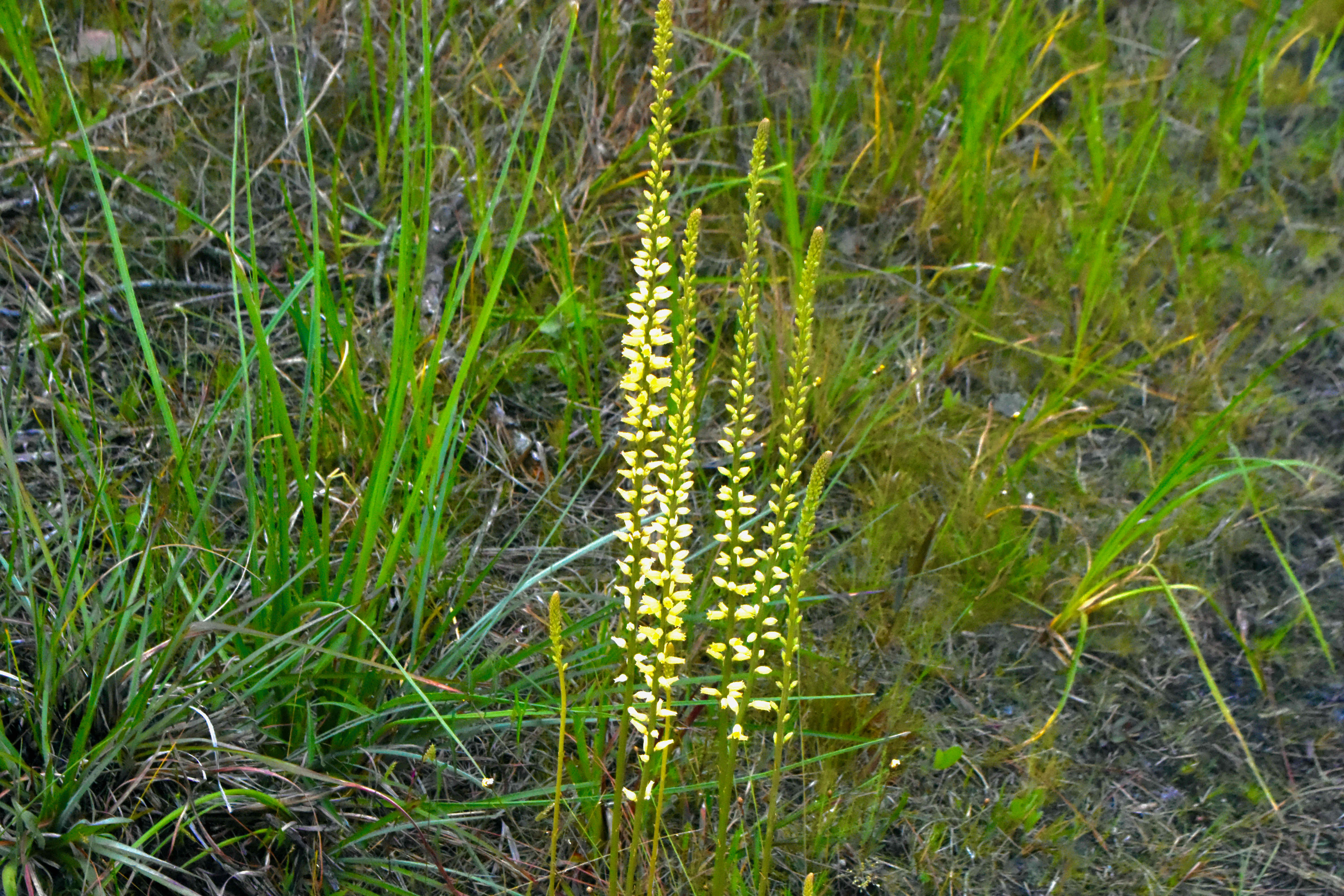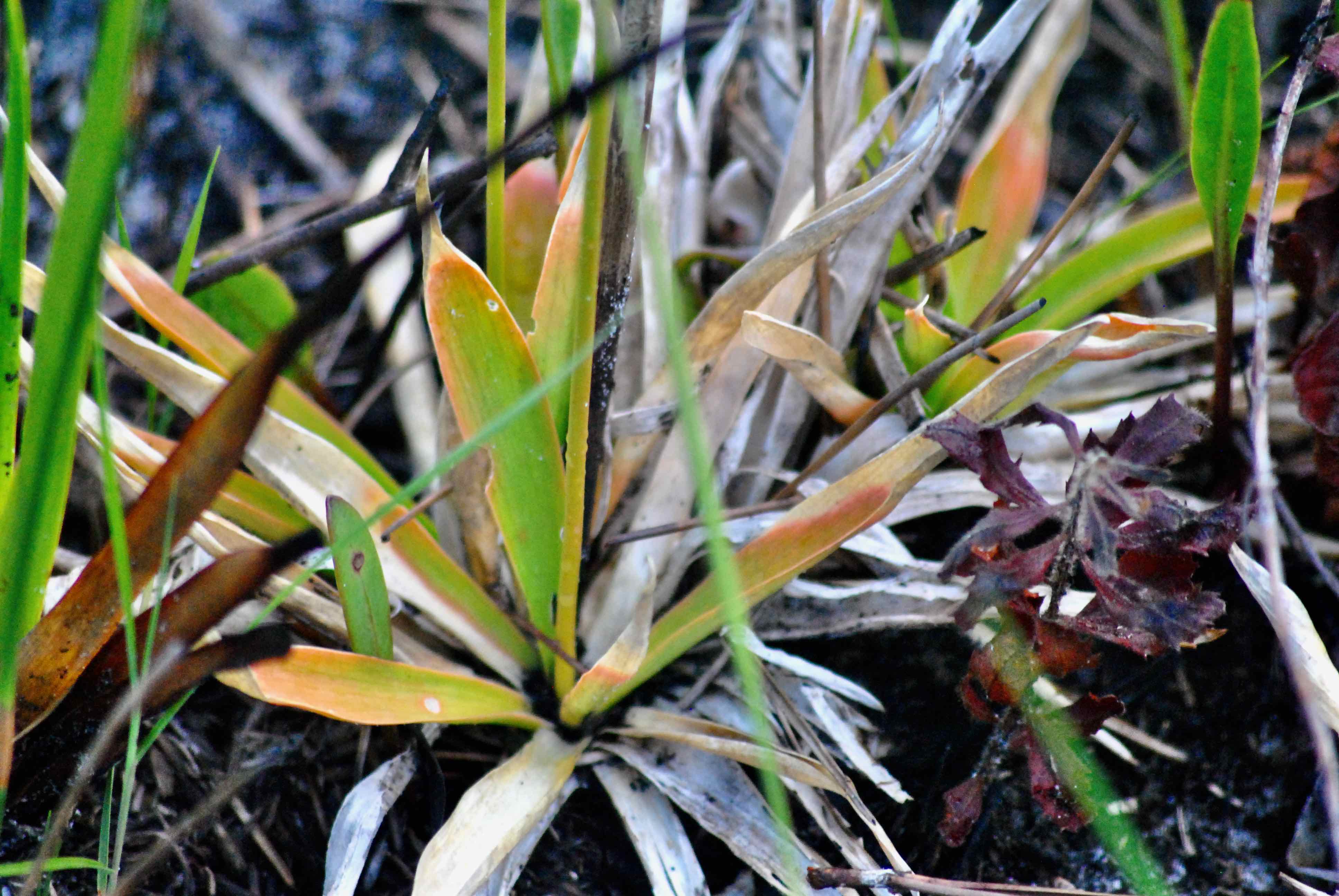
Yellow colicroot, photographed at J.W. Corbett Wildlife Management Area, Palm Beach Gardens, Palm Beach County, in April 2022.
With a name like colicroot, you'd think this plant would be part of somebody's medicine cabinet. Some members of the genus, were once staples of herbal medicine. But our guy, yellow colicroot, Aletris lutea, kind of flies under the radar in that regard, overshadowed by more prominent members of its kind.
Yellow colicroot is one of five members of Aletris — colicroots — found in Florida and one of two in South Florida. It is a perennial, native to the Sunshine State, and is also native to Louisiana, Mississippi, Alabama and Georgia.
It's found in most of Florida and all of South Florida with the exception of Broward County. According to the Institute for Regional Conservation in Delray Beach, either it is locally extinct within Broward or never grew there in the first place. The IRC also considers it a rare plant in South Florida.
It grows in places that are seasonally wet or wet throughout the year — savannas, pine flatwoods, bogs and ditches. It requires both moist soil and full sun, but is somewhat drought tolerant once established. For most of the year, yellow colicroot is little more than a clump of lance-shaped leaves two to six inches long just off the ground. In late winter through early summer, the plant sends out a spike that can reach three feet in height, with yellow, vase-shaped flowers, each about a half-inch, along its length. The flowers can be white, though that is rare.
But even when in full bloom, much of the plant is hidden from our eyes. Yellow colicroot forms deep and extensive roots that are key to its survival when fire burns through the bogs and woods where it grows. The fire will top-kill the plant, but new leaves will emerge from the roots.
Its habit of blooming early in spring makes it an important source of nectar for bees.
The other member of Aletris native to South Florida is A. bracteata, white colicroot. You're not likely to stumble across this plant unless you're wandering through south Miami-Dade County or the Florida Keys, and even there it is a rare plant, rare enough that the IRC classifies it as imperiled.
By the way, the member of Aletris most associated with herbal medicine is also called white colicroot, but is scientifically known as A. Farinosa. It grows in Florida but only in a couple of counties in the Panhandle. It's been used for menstrual and digestive problems and other conditions. White colicroot, under the name unicorn root, was one of the ingredients in a 19th century concoction called Pinkham's Vegetable Compound, which was used to treat menstrual and menopausal problems. Another key ingredient: alcohol.
Colicroots have been used to treat congestive heart problems, coughs, colds and colicky babies, as might be expected given the name.
Yellow colicroot is used in natural landscapes, restorations and in moist and wet gardens. Its need for moisture probably limits its use. Few if any commercial nurseries sell the plant, but it can be grown from seeds.
According to the late Florida Atlantic University botany professor Daniel F. Austin, the scientific name, Aletris, stems from aleto, a slave girl who ground wheat for her masters during the classical Greek era. Lutea is Greek for yellow.
Other common names include star grass, yellow star grass, unicorn plant and ague.
Most sources, including the IRC and the Atlas of Florida Vascular Plants, classify Yellow colicroot as a member of Nartheciaceae, a family of plants known for having thick underground stems called rhizomes and clumps of leaves at their base. Austin and the U.S. Department of Agriculture's PLANTS database includes it in Liliaceae, the lily family. We'll go with Nartheciaceae.
Click on photo for larger image
Links for Yellow Colicroot



